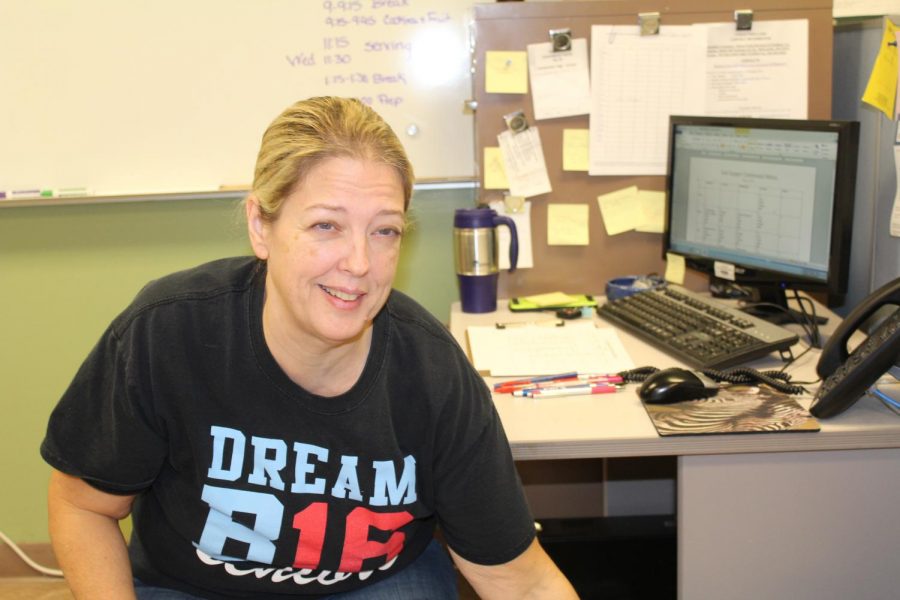April Carr Explains Kitchen Process
Kitchen Manager April Carr works at her desk. Carr recently explained the way the kitchen operates and has changed The Talon’s opinion of cafeteria food.
For the past 17 years, April Carr has worked in one of the Centennial School District’s kitchens. She is currently the kitchen manager at the high school,. A lot of students have concerns about the food served in the cafeteria and cite reasons such as smell and taste. The Talon believes that with three lunch times as well as having a total of 1800 students in the school, it is hard to make the food to everyone’s preferences. And there is much more going on behind the scenes than most students know about the process of preparing food for CHS students.
Something that contributes to the type of food offered is because of how many free and reduced lunches there are for the students. The kitchen staff often uses food that the government provides. They also have to follow certain guidelines.
Carr said, “We gave to go by federal guidelines to follow the law.”
With this, it gives a different perspective on how this is all works. They also have to follow certain calorie counts due to the guidelines they have to follow.
There specific calorie count is according to Carr, “For snacks it’s 200 and for entrees we are cut off at 300.” Carr does make most food taste better by adding whatever she sees fit. With all this in mind there is so much to really consider when thinking about the lunches.
Carr also prepares the food one day ahead so it is ready for the next day. This is only a problem when there are a lot of snow days because it then cuts into what she has already set aside.
When people think of how “gross” the pizza is, Carr said, “I can tell you that it’s the same pizza as Costco gets.” This is interesting because you typically wouldn’t think that at first. Also, the apples seem to be a point of interest. People think apples that are not eaten go straight from the “no thank you” bin to the bins for lunch. This isn’t true, “If it goes in the ‘no thank you’ bin it is washed and recycled,” which may give people peace of mind. And Carr notes that students must take a fruit and vegetable with a meal, again citing federal laws.
On the other hand, we believe that if they had a way to make some better food more kids might eat it more often. For the amount of free and reduced lunches, a lot of those kids don’t eat the food provided. When kids don’t eat the food it’s normally because they don’t like how it looks or just have negative things to say about it which is normal to say not knowing a lot about it. There isn’t much money for the food because they have to get what they are able too with the money they have. With every meal they do try and make them as good as they can.
We believe that the school food is pretty good under the circumstances of the kitchen staff. Trying to make the food the best they can when most of it is frozen or canned is very impressive. People should not take these things for granted. No one can take away the fact that they care about us enough to make sure we have everything we do. The food is not necessarily what they want it to be but it isn’t their fault for that. Overall, if the students really need to know what is actually going on in the kitchen then maybe they wouldn’t be so hard on all of it.






